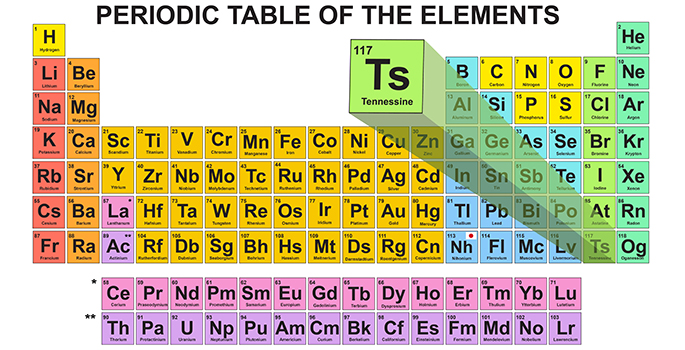|
Getting your Trinity Audio player ready...
|
“I often find myself the only black woman or the only woman in a room all the time. I mean, all the time,” she says. “For some people that is not their reality, they’re not able to understand what it feels like to always walk into the room and get certain kind of looks or certain types of questions because you’re different.”
Clarice Phelps
Introduction
Clarice Phelps made history when she became the first African woman to contribute to discovering a new element on the periodic table, tennessine, with the atomic number 117. She is a gifted and committed researcher who has achieved essential advancements in nuclear chemistry.
What is Tennessine?
Tennessine is a man-made chemical element with the atomic number 117 and the letter Ts. It is a very radioactive substance. Tennessine belongs to the halogen family and is predicted to have properties resembling those of astatine, iodine, and chlorine. Tennessine has no known biological function and is not utilized in any commercial applications due to its brief half-life.

Here are 12 fun facts about Clarice Phelps:
- Phelps was born and raised in the Virginia town of Lynchburg. Even though she was raised in a low-income family, her parents instilled a love of study and a strong work ethic in her.
- Phelps graduated with a degree in chemistry from Lynchburg College in 2003. She later graduated from the University of Florida with a Master’s in nuclear engineering.
- Phelps worked at Cole-Parmer, a manufacturer of chemical instruments, after serving in the US Navy. A year later, though, she left Chicago because she didn’t like the city’s chilly weather and returned to Tennessee.
- Phelps started working as a research worker at the Oak Ridge National Laboratory (ORNL) in 2006. She advanced to join the radio chemistry team as a scientist.
- While employed at ORNL, Phelps was instrumental in discovering tennessine, a brand-new element on the periodic table. The element’s isotopes were created in a particle accelerator, and she was in charge of processing and purifying them.
- Phelps was listed as a co-discoverer of tennessine by the International Union of Pure and Applied Chemistry (IUPAC) for its discovery. Only two women were on the list, including her.
- She worked on the nuclear reactor, steam generator chemical controls, and the reactor’s water for four and a half years while stationed on the aircraft carrier USS Ronald Reagan. Twice she deployed
- Phelps has held a position as an adjunct professor at the University of Tennessee and her employed at ORNL. She is dedicated to encouraging underrepresented groups to seek careers in science and has mentored numerous young scientists.
- Phelps has received accolades for her work in science from several organizations, including the Black Engineer of the Year Award. She is a member of the National Society of Black Engineers.
- Phelps met her husband, a nuclear chemist while working at ORNL. Together, they are parents to two kids.
- Phelps is a proponent of clean energy and is interested in environmental issues, in addition to her work in nuclear chemistry.
- Many young scientists, especially women and people of color, look up to Phelps as a role model and source of inspiration. She is committed to making science more open and available to everyone, and she has overcome numerous challenges to get where she is now.
Conclusion
Clarice Phelps is a distinguished scientist and a leader in her area, to sum up. Her role in discovering a new element is a noteworthy accomplishment and evidence of her talent, commitment, and tenacity. Young scientists who want to change the world of science, especially those from underrepresented groups, find inspiration in their life and work. Clarice Phelps has demonstrated that anything is achievable with effort, tenacity, and a positive outlook by smashing barriers and preconceptions.


